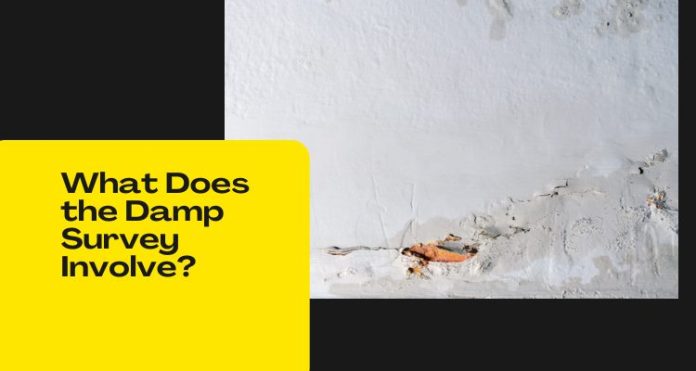A damp survey involves an inspection of the structure of a building to determine if there are signs of dampness in the structure. The survey is conducted by a professional who will use various equipment to assess your property’s condition.
Damp surveys can be carried out in both domestic and commercial environments, but they differ slightly depending on which type of building you’re inspecting. A damp residential survey follows similar criteria as a damp commercial survey, with some minor differences:
-The equipment used for a damp residential survey is slightly different than that used for a commercial one.
-A damp residential survey usually takes longer than a commercial one because more time is required to assess each room’s condition and make sure that all areas have been properly assessed.
What Is a Damp Survey?
A damp survey entails inspecting the building’s structure, including walls, floors and ceilings; whether there are any signs of wetness or moisture; and whether there are any signs of water damage or structural damage. The survey will also look into how well the building has been built and how well-maintained it is.
A damp survey involves:
-Measuring humidity levels in order to determine how much moisture is present in the air and how quickly it can spread through different areas of the structure
-Analyzing temperature and humidity data in order to identify any problems with ventilation or heating systems
-Identifying any signs of water damage by looking for damaged materials, broken tiles and ceiling tiles, as well as moulds, growing on walls and ceilings
-Damp surveys can be carried out in both domestic and commercial environments, but they differ slightly depending on which type of building you’re inspecting. A damp residential survey follows similar criteria as a damp commercial survey, with some minor differences:
-The equipment used for a damp residential survey is slightly different than that used for a commercial one.
-A damp residential survey usually takes longer than a commercial one because more time is required to assess each room’s condition and ensure that all areas have been properly assessed.
How Is a Damp Survey Done?
- This depends on the type of building being inspected. A professional can identify any problems with the structure using their knowledge of construction methods, structural materials and design details. They may use infrared or thermal imaging cameras to examine the structure’s surface temperature distribution and map temperatures across different surfaces within rooms or stairwells.
- You can carry out a damp survey if you have access to relevant information, such as how long it takes for moisture to become trapped in specific materials (for example, wood). However, this may not always be practical for everyone, so it’s best to hire an expert with experience conducting these kinds of assessments regularly.
- The process involves taking pictures of the home via an infrared camera as well as using tools such as thermometers to measure the temperature of various parts of the property, such as walls, ceilings and floors. The surveyor will also measure the ventilation rates within each room so they can provide recommendations on how best to resolve any problems identified during this process.
Conclusion
Conducting a free damp survey will give you stress-free life and also saves you a lot of money. It also saves your health and keeps your building safe. Hire a certified damp proofing expert from a reputed company and complete your damp survey.
Apart from that if you want to know about then visit our Business category.















